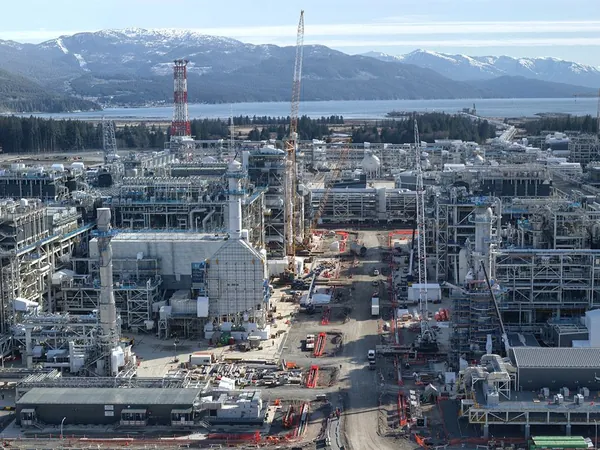
Western Canada Faces Gas Price Crisis: Is the Worst Yet to Come?
2024-10-09
Author: Amelia
Natural gas prices in Western Canada recently plunged into negative territory, marking dire circumstances for local producers. This predicament leaves them with a tough choice: either pay buyers to take their gas or limit production altogether.
As inventory levels near their maximum capacity, industry experts are raising concerns about how much more gas can be stored before the winter heating season fully kicks in. The situation is exacerbated by warmer-than-normal weather last winter, leading to inflated storage levels and poor pricing throughout this year.
Alberta's Natural Gas Prices Hit Rock Bottom
Producers are feeling the pinch. Doug Dafoe, CEO of Ember Resources, commented, “We’ve just experienced the worst summer on record for pricing over the past decade.” As the summer progressed, storage levels steadily filled up, reaching a physical limit for how much gas could be stored underground.
In response to this ongoing crisis, Alberta’s Energy Minister Brian Jean acknowledged the struggles faced by producers in southern and central Alberta, stating, “We are consulting with stakeholders to determine what can be done to support the industry.”
The Canadian LNG Push
Interestingly, the predicament arrives as the region prepares for a burgeoning liquefied natural gas (LNG) industry. The LNG Canada project, set to begin fully operational exports in the coming year, is aiming to supply 1.8 billion cubic feet of gas daily to Asian markets. However, despite the expected growth in demand, summer prices remained feeble due to a gas oversupply.
Recent data indicated that Alberta's spot gas prices fell to an astonishing 5 cents per gigajoule by September 27, and negatively rated benchmarks were recorded three times in British Columbia throughout the month. This led to a situation where producers have had to bear the costs of extracting gas, causing a ripple effect through the market.
Production Curtailment Measures
ARC Resources, one of Canada’s largest gas producers, curtailed output by approximately 250 million cubic feet per day in the northeastern part of British Columbia. Advantage Energy announced similar cutbacks, implementing a strategic production curtailment affecting up to 130 million cubic feet per day. CEO Mike Belenkie stated that if it becomes "cash flow negative" to keep producing, most producers will have to follow suit.
Despite the implemented curtailments, analysts estimate that production in Western Canada still hovers at around 17.5 billion cubic feet per day, while storage capacities are nearing 98% capacity.
What's Next for Producers?
While some companies have hedged their production to secure better prices in the future, many continue to struggle under weak market conditions. As operators look for immediate relief, Alberta’s government is exploring options to aggregate gas supplies among smaller producers to help facilitate better pricing contracts.
In the midst of this turmoil, optimism persists about upcoming winter conditions. Many industry leaders believe that colder weather should spark an uptick in consumption, which may ultimately stabilize prices. Birchcliff Energy's CEO, Chris Carlsen, expressed cautious optimism, saying, “The future certainly looks good, but we must be prepared for volatility as the LNG facility ramps up.”
Looking ahead, analysts project an increase in benchmark gas prices across North America for the next fiscal year, with some suggesting they could rise to an average of $3.10 per million British thermal units.
As the storm clouds gather over Western Canada’s gas producers, the big question remains: Can they withstand the current pressures until relief eventually arrives? Only time will tell as they gear up for a pivotal winter season ahead.









 Brasil (PT)
Brasil (PT)
 Canada (EN)
Canada (EN)
 Chile (ES)
Chile (ES)
 España (ES)
España (ES)
 France (FR)
France (FR)
 Hong Kong (EN)
Hong Kong (EN)
 Italia (IT)
Italia (IT)
 日本 (JA)
日本 (JA)
 Magyarország (HU)
Magyarország (HU)
 Norge (NO)
Norge (NO)
 Polska (PL)
Polska (PL)
 Schweiz (DE)
Schweiz (DE)
 Singapore (EN)
Singapore (EN)
 Sverige (SV)
Sverige (SV)
 Suomi (FI)
Suomi (FI)
 Türkiye (TR)
Türkiye (TR)